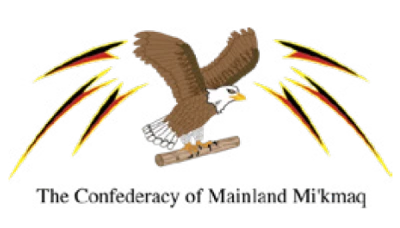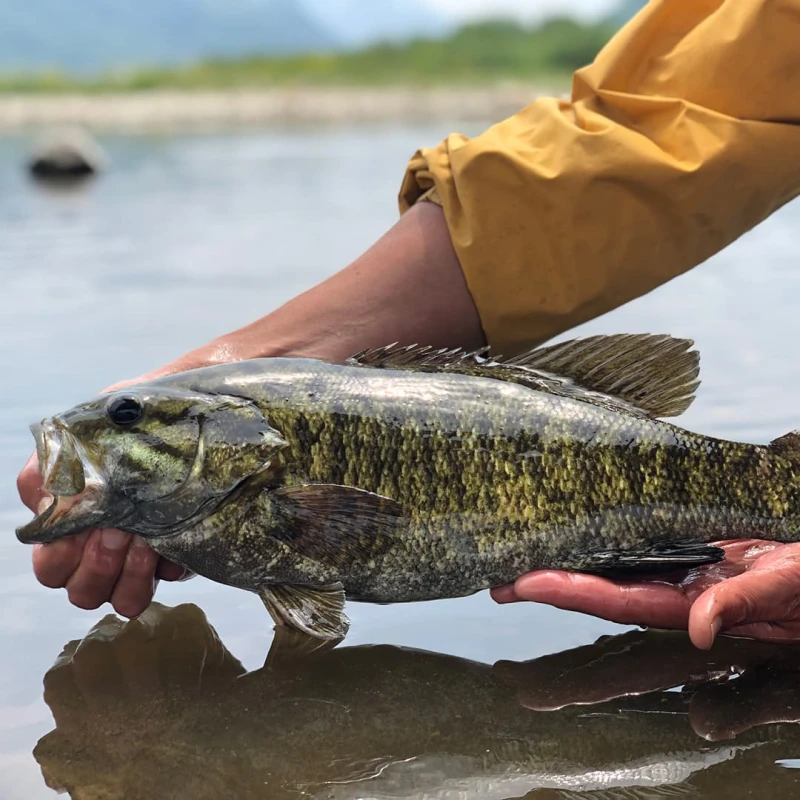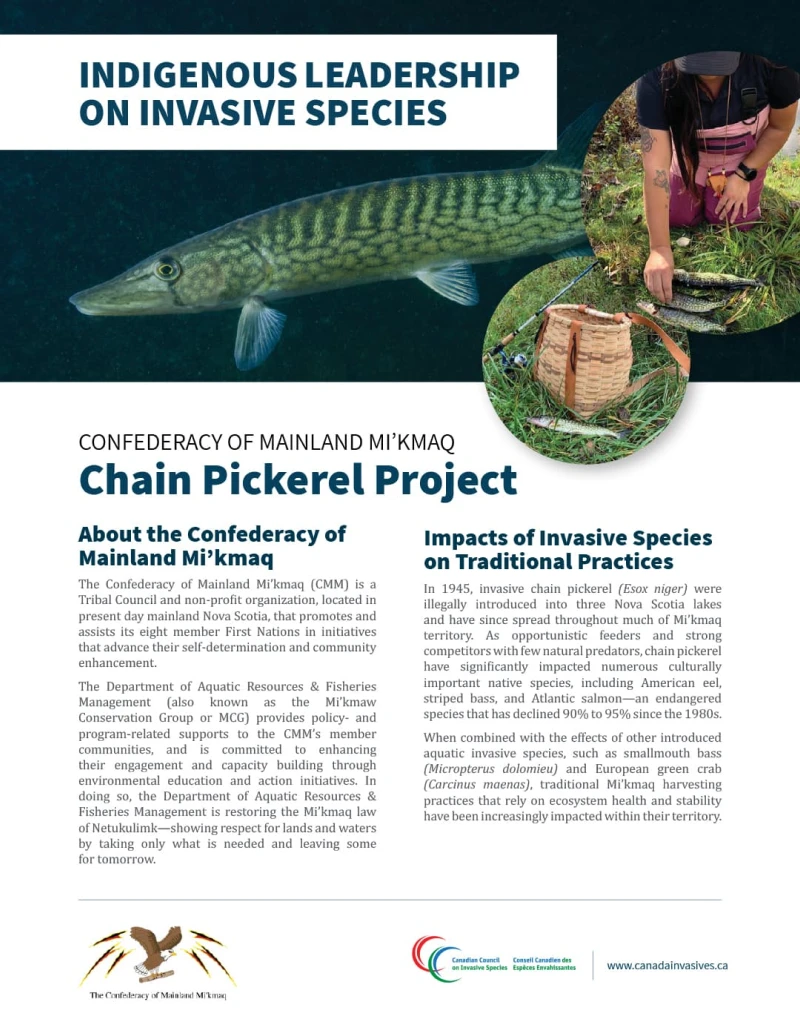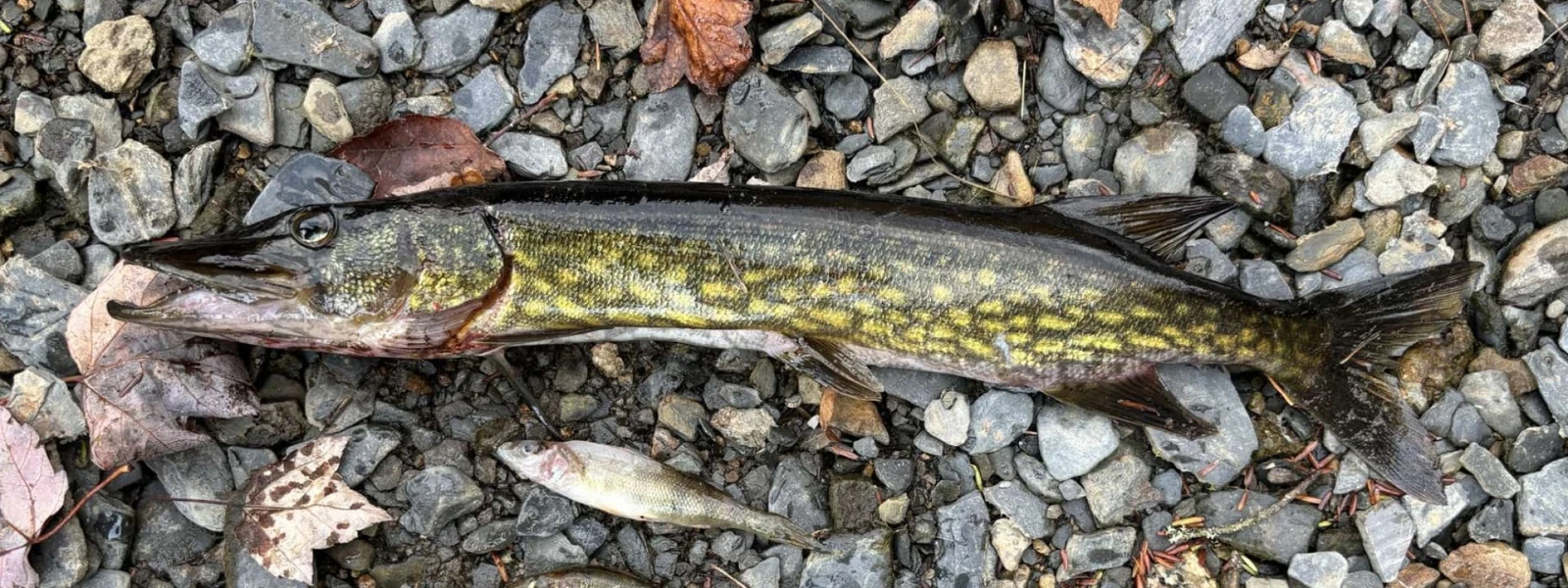About the Confederacy of Mainland Mi’kmaq
The Confederacy of Mainland Mi’kmaq (CMM) is a Tribal Council and non-profit organization based in present-day mainland Nova Scotia. It promotes and assists its eight member First Nations in initiatives that advance their self-determination and community development.
The Department of Aquatic Resources & Fisheries Management—also known as the Mi’kmaw Conservation Group (MCG)—provides policy and program-related support to CMM’s member communities. The department is committed to enhancing engagement and capacity building through environmental education and action initiatives. In doing so, it is restoring the Mi’kmaq law of Netukulimk, “taking only what is needed while ensuring resources remain for future generations”.

Impacts of Invasive Species on Traditional Practices
In 1945, invasive chain pickerel (Esox niger) were illegally introduced into three lakes in Nova Scotia. Since then, they have spread across much of Mi’kmaq territory. As opportunistic feeders with few natural predators, chain pickerel have significantly impacted culturally significant native species, including:
The impact of chain pickerel is compounded by other introduced aquatic invasive species, such as:
© Adamthedeertracker via iNaturalist.org, used under CC BY 4.0.

© milesnojiri via iNaturalist.org, used under CC BY 4.0.
Community Efforts to Combat Invasive Species Impacts
Since its establishment in 2012, the Mi’kmaw Conservation Group (MCG) has recognized chain pickerel as a serious invasive species of concern. In response, the Department of Aquatic Resources & Fisheries Management has developed numerous programs and initiatives to:
Public Communication and Education Initiatives
Education has been a cornerstone of the Chain Pickerel Project, outreach activities include:
These efforts have directly engaged hundreds of Mi’kmaq community members in learning about invasive species issues.
Traditional Harvesting and Creative Solutions
The Department of Aquatic Resources & Fisheries Management encourages community members to target invasive species while conducting traditional harvesting practices. Innovative solutions include:
The Confederacy of Mainland Mi’kmaq continues to explore grassroots solutions that integrate traditional practices, invasive species management, and community engagement to protect local ecosystems.
Indigenous Leadership on Invasive Species
On behalf of the Canadian Council on Invasive Species (CCIS), Advocate Strategies collaborated with Indigenous communities and organizations to develop a series of spotlights on Indigenous-led invasive species initiatives. These case studies aim to inspire future projects and promote collaborative action in addressing invasive species challenges.
Learn More About the Confederacy of Mainland Mi’kmaq’s Work

